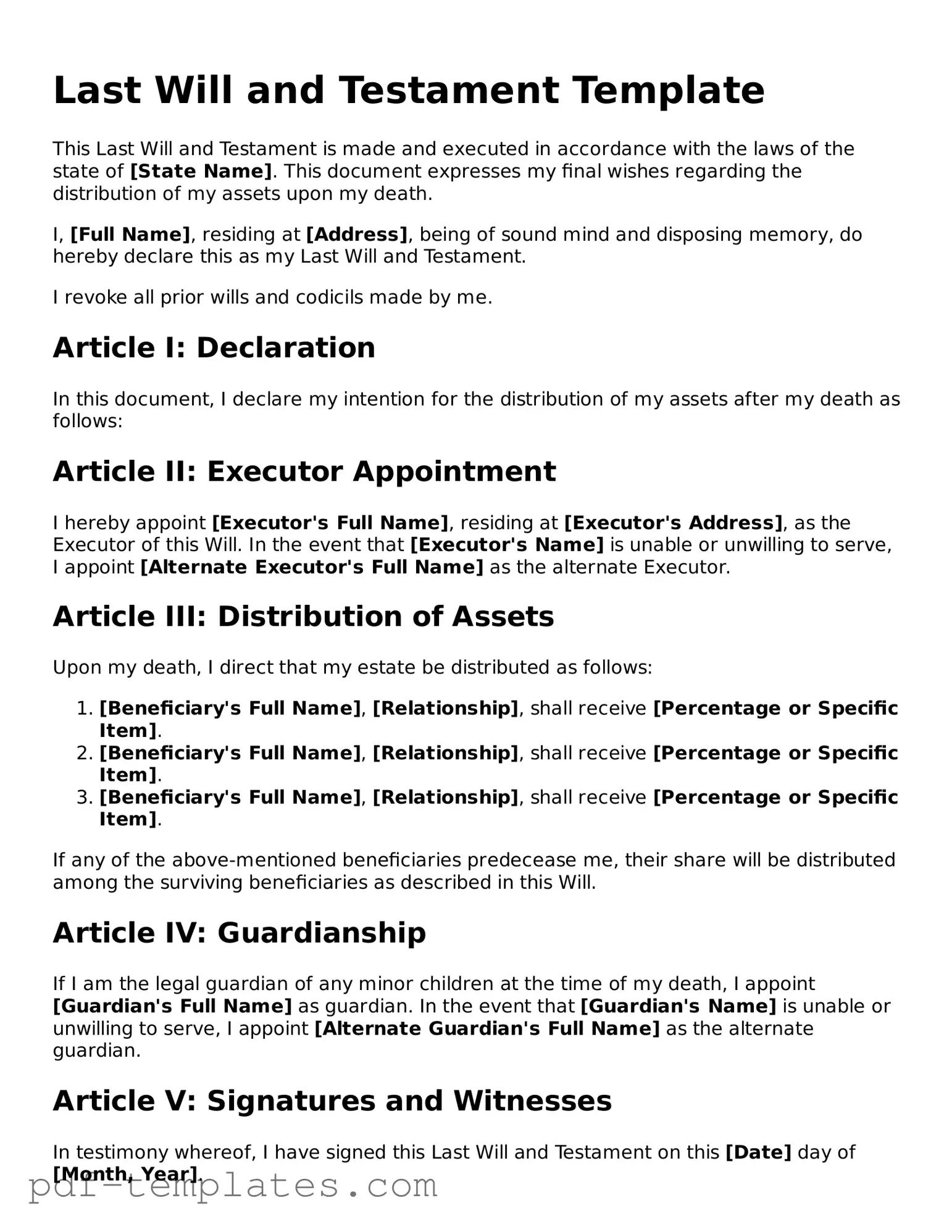A Living Will is a document that outlines a person's wishes regarding medical treatment in the event they become unable to communicate their preferences. Like a Last Will and Testament, it serves to express an individual's desires, but it focuses specifically on healthcare decisions rather than the distribution of assets. Both documents are crucial for ensuring that a person's wishes are respected, but they operate in different contexts—one for financial matters and the other for medical care.
A Trust is another legal instrument that shares similarities with a Last Will and Testament. While a will goes into effect after a person’s death, a trust can be active during a person's lifetime and can continue to manage assets after death. Both documents allow individuals to dictate how their assets should be handled, but a trust can provide more flexibility and privacy since it typically avoids the probate process, which is required for wills.
A Power of Attorney is a document that grants someone the authority to act on another person's behalf in legal or financial matters. This document is similar to a Last Will and Testament in that it allows individuals to designate who will make decisions for them. However, while a will takes effect after death, a power of attorney is effective during a person's life, making it a key tool for managing affairs if someone becomes incapacitated.
An Advance Directive is often confused with a Living Will, but it encompasses a broader range of healthcare decisions. It allows individuals to appoint a healthcare proxy and outline their medical preferences. Like a Last Will and Testament, an Advance Directive is a way to ensure that personal wishes are followed, but it specifically addresses medical care rather than asset distribution.
A Codicil is a legal document that serves as an amendment to an existing will. It allows individuals to make changes to their Last Will and Testament without needing to create an entirely new document. This is similar to a will in that it must be executed with the same legal formalities, ensuring that the individual’s updated wishes regarding asset distribution are clearly documented and enforceable.
A Letter of Instruction is not a legally binding document, but it can accompany a Last Will and Testament. It provides additional guidance on how to handle personal matters, such as funeral arrangements or specific wishes regarding sentimental items. While a will dictates the distribution of assets, a letter of instruction can offer clarity and insight into the deceased's intentions, making it a valuable companion document.
